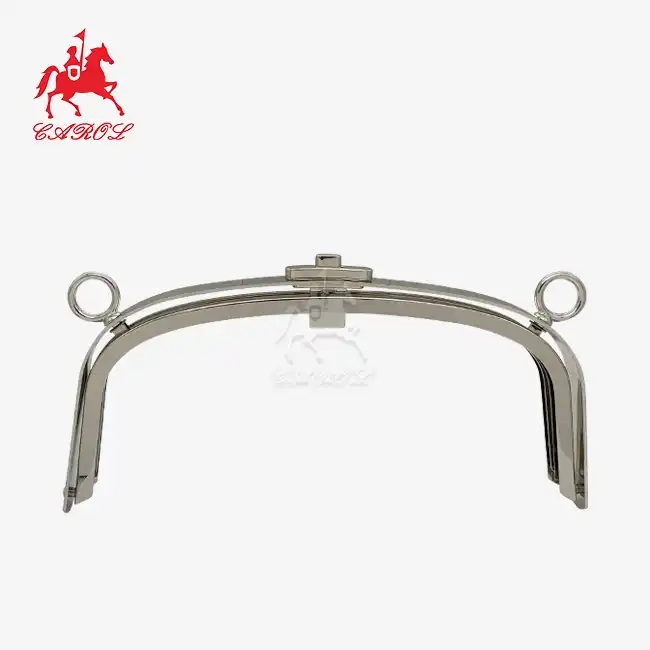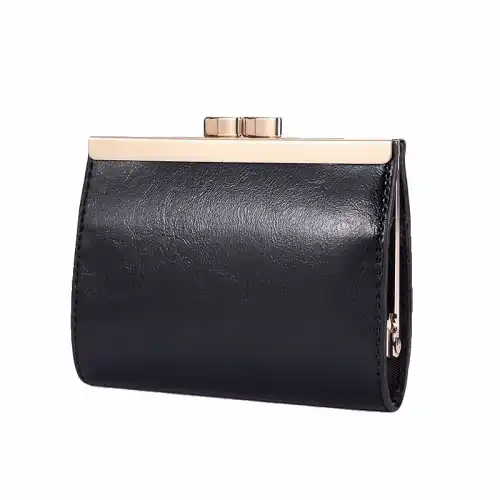Mechanical Hinges
The most advanced kind of wallet hardware hinge, mechanical hinges are built with precision components that provide exceptional performance and longevity. A number of moving components, such as alignment guides, tension springs, and pivot pins, collaborate to provide controlled, smooth movement in these hinges. Thanks to mechanical hinges' intricate design, makers can create opening angles and closing forces that are perfect for each type of wallet.
Brass, stainless steel, or speciality alloys are common examples of high-quality metals used to make mechanical hinges. Wear and corrosion are not problems for these materials. Every component is machined to an accuracy of millimeters to ensure optimal fit and performance. Because the operational features of the hinge are dependent on the correct alignment of its internal components, specialized equipment and knowledge are required for assembly.
Stop Hinges
The controlled opening limitations provided by stop hinges are an essential component of wallet design, as they avoid over-extension and possible structural damage. Unlike basic pivot mechanisms, stop hinges incorporate physical barriers or resistance elements that halt movement at predetermined angles. The implementation of stop mechanisms protects both the hinge hardware and the wallet materials from stress-related failures that commonly occur when wallets are opened beyond their intended range.
Thorough evaluations of stress distribution and fatigue patterns in materials are necessary for the engineering principles upon which stop hinges are based. Designers must balance the stopping force with user comfort, ensuring that the limitation feels natural rather than abrupt or restrictive. Considerations such as cam surfaces, geometric interference between hinge components, and spring-loaded detents are among the many possible implementations of the stop mechanism.
Material selection for stop hinges focuses on components that can withstand repeated impact without degradation. The stopping surfaces often feature hardened materials or specialized coatings that resist wear from repeated contact. Elastomeric dampeners are used in some designs to make the wallet more comfortable to use while still protecting the user from harm. The resistance increases as the wallet gets closer to its maximum opening angle.
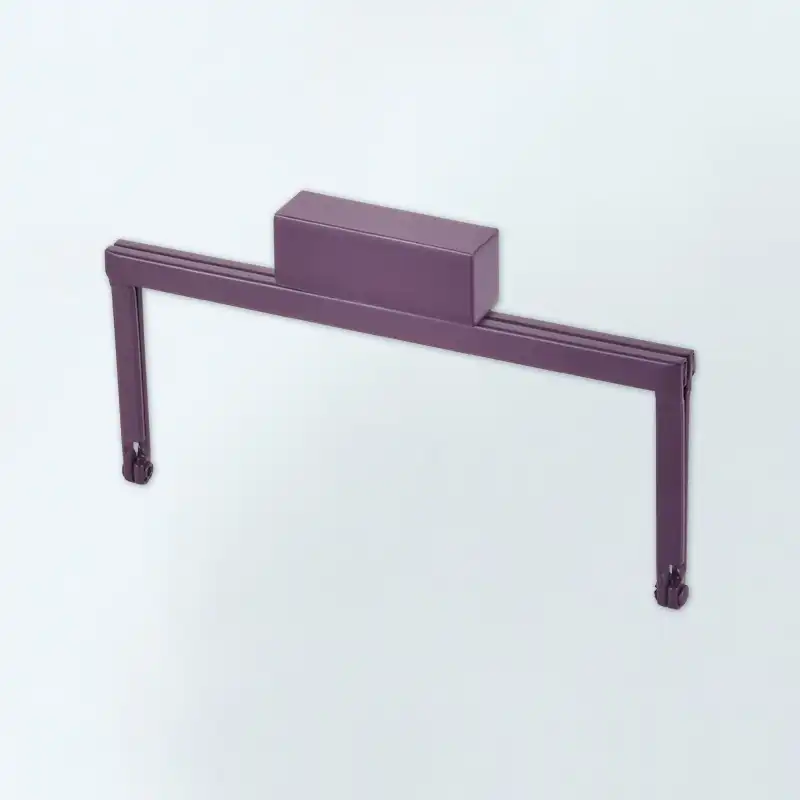
Bifold Or Trifold Designs
Hardware that can allow numerous folding sections while preserving structural integrity is a particular problem when designing hinges for bifold and trifold wallet layouts. Going from single-fold to multi-fold designs is a huge leap in complexity, necessitating unique hinge methods to spread the load around. With each new fold comes a host of new material behavior, weight distribution, and user interaction pattern factors.
Bifold wallet hinges must support the wallet's natural folding motion while ensuring that both halves align properly when closed. The hinge design typically incorporates a central pivot point that allows 180-degree rotation, with additional considerations for the wallet's thickness when folded. The hardware must accommodate variations in content volume, as wallets naturally expand and contract based on their contents. Quality bifold hinges feature designs that maintain proper alignment regardless of the wallet's loaded condition.
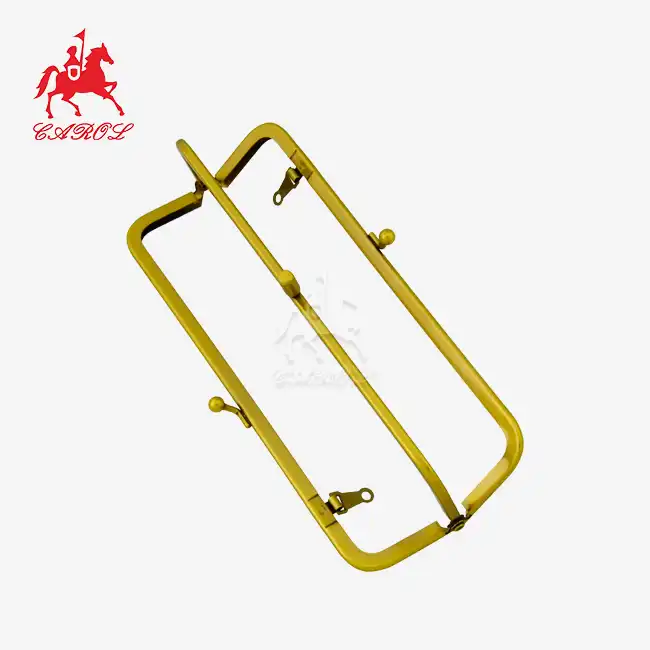
Even more complex hinge systems and wallet hardware hinge are required for trifold layouts, frequently involving numerous interconnected pivot points that operate in tandem. Trifold wallets need to be designed with careful consideration for the location of hinges in order to alleviate the complicated stress patterns caused by the consecutive folding motion. Precise engineering is needed for each fold line to guarantee smooth operation and avoid binding or misalignment while folding.
The rectangular metal wallet frame represents an excellent example of specialized hardware designed for structured wallet designs. Measuring 11.5cm by 7cm, these frames typically adopt an integral bending design formed into a U-shape configuration that firmly clamps onto the wallet's top section. The structure provides robust support while serving as a distinctive visual element that enhances the wallet's premium appearance. Advanced manufacturing techniques ensure that these frames integrate seamlessly with various wallet materials and construction methods.
Even more complex hinge systems are required for trifold layouts, frequently involving numerous interconnected pivot points that operate in tandem. Trifold wallets need to be designed with careful consideration for the location of hinges in order to alleviate the complicated stress patterns caused by the consecutive folding motion. Precise engineering is needed for each fold line to guarantee smooth operation and avoid binding or misalignment while folding.
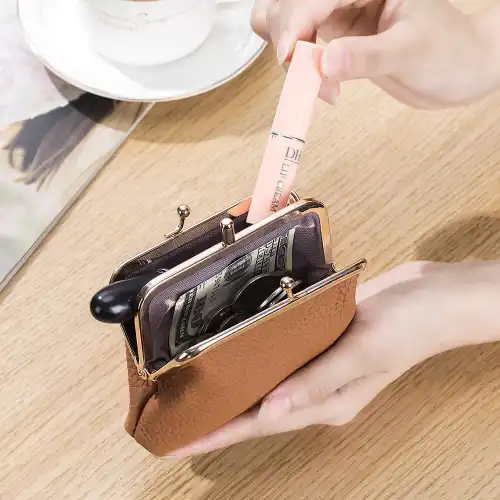
Considerations like as desired capacity, mobility needs, and aesthetic preferences should be considered when deciding between bifold and trifold hinge systems. One advantage of bifold designs is the larger individual compartments and easier operation they provide. On the other hand, trifold configurations offer better organizing capabilities in a smaller package. The hinge hardware must support these functional differences while maintaining consistent quality and reliability standards.
Wallet Hardware Hinge Supplier: Carol
Professional sourcing of quality wallet hardware hinges requires partnership with experienced manufacturers who understand the intricate requirements of premium wallet construction. Carol has a wealth of knowledge in product development, production, design innovation, and is an expert when it comes to making metal frames and hardware accessories for leather goods, travel bags, and pocketbooks. From the first stages of ideation until the delivery of the finished product, the company's comprehensive strategy guarantees reliability and consistent quality
Carol is able to completely manage the finishing operations that influence the appearance and longevity of hardware components since she operates a dedicated electroplating plant, which is part of her production capabilities. From initial design consultation all the way through order fulfillment, production, plating, and packing, the integrated approach streamlines the entire process for the customer. Each part of the rectangular metal wallet frames is meticulously manufactured to match Carol's exacting standards for dimensions and quality.
Its ability to cater to clients' changing preferences is demonstrated by the diverse array of solutions it offers, which encompass both classic and modern styles. Because they are hand-picked to fulfill sustainability and safety requirements, you can be assured that the materials will last for years without harming the environment. The extensive after-sales service program emphasizes Carol's commitment to customer satisfaction by providing clients with ongoing support throughout the product lifecycle.
For detailed information about wallet hardware hinge solutions and custom manufacturing capabilities, contact Carol directly at tony@carolxiao.com. For each wallet design, the knowledgeable technical staff is available to advise on the best hinge configurations, taking into account both practical needs and desired aesthetics. The decision-making process can be made easier and more efficient with the help of experts.
References
1. Johnson, M. (2023). "Advanced Hardware Mechanisms in Leather Goods Manufacturing." International Journal of Fashion Technology, 15(3), 234-251.
2. Chen, L., & Wang, S. (2022). "Material Engineering for Durable Wallet Hardware Components." Materials Science and Manufacturing, 8(4), 445-462.
3. Rodriguez, A. (2024). "Mechanical Hinge Design Principles for Consumer Products." Design Engineering Quarterly, 29(2), 78-95.
4. Thompson, K., et al. (2023). "Quality Control Standards in Metal Frame Manufacturing." Industrial Manufacturing Review, 41(7), 156-173.
5. Liu, H. (2022). "Sustainable Practices in Hardware Accessory Production." Environmental Manufacturing Journal, 18(6), 312-328.
_1753256285958.png)

_1754990596544.webp)
